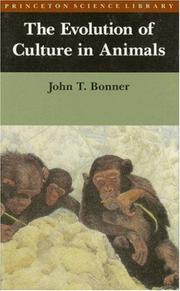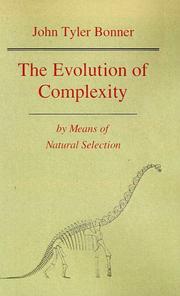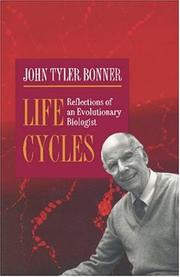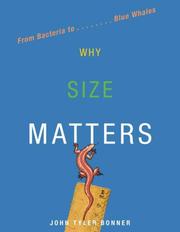| Listing 1 - 10 of 69 | << page >> |
Sort by
|

ISBN: 0674634101 9780674634107 Year: 1974 Publisher: Cambridge, Mass. Harvard University Press
Abstract | Keywords | Export | Availability | Bookmark
 Loading...
Loading...Choose an application
- Reference Manager
- EndNote
- RefWorks (Direct export to RefWorks)
Book
ISBN: 9027462208 Year: 1982 Volume: vol 67 Publisher: Utrecht Spectrum
Abstract | Keywords | Export | Availability | Bookmark
 Loading...
Loading...Choose an application
- Reference Manager
- EndNote
- RefWorks (Direct export to RefWorks)
Comportement --- Culture --- Cultuur --- Dierkunde --- Gedragswetenschap --- Zoologie

ISBN: 0691023735 Year: 1989 Publisher: Princeton : Princeton University Press,
Abstract | Keywords | Export | Availability | Bookmark
 Loading...
Loading...Choose an application
- Reference Manager
- EndNote
- RefWorks (Direct export to RefWorks)
Biologie [Socio] --- Comportement social des animaux --- Culture --- Cultuur --- Sociaal gedrag bij dieren --- Social behavior in animals --- Sociobiologie --- Sociobiology --- 591.5 --- Animal habits. Animal behaviour. Ecology. Ethology. Animal and environment. Bionomy --- 591.5 Animal habits. Animal behaviour. Ecology. Ethology. Animal and environment. Bionomy --- Social behavior in animals. --- Sociobiology. --- Culture. --- Social behavior animals

ISBN: 0691084947 Year: 1988 Publisher: Princeton : Princeton University Press,
Abstract | Keywords | Export | Availability | Bookmark
 Loading...
Loading...Choose an application
- Reference Manager
- EndNote
- RefWorks (Direct export to RefWorks)
John Tyler Bonner makes a new attack on an old problem: the question of how progressive increase in the size and complexity of animals and plants has occurred. "How is it," he inquires, "that an egg turns into an elaborate adult? How is it that a bacterium, given many millions of years, could have evolved into an elephant?" The author argues that we can understand this progression in terms of natural selection, but that in order to do so we must consider the role of development--or more precisely the role of life cycles--in evolutionary change. In a lively writing style that will be familiar to readers of his work The Evolution of Culture in Animals (Princeton, 1980), Bonner addresses a general audience interested in biology, as well as specialists in all areas of evolutionary biology. What is novel in the approach used here is the comparison of complexity inside the organism (especially cell differentiation) with the complexity outside (that is, within an ecological community). Matters of size at both these levels are closely related to complexity. The book shows how an understanding of the grand course of evolution can come from combining our knowledge of genetics, development, ecology, and even behavior.
Biological Evolution. --- Models, Genetic. --- Population Dynamics. --- 575.8 --- Demographic Aging --- Demographic Transition --- Optimum Population --- Population Decrease --- Population Pressure --- Population Replacement --- Population Theory --- Residential Mobility --- Rural-Urban Migration --- Stable Population --- Stationary Population --- Malthusianism --- Neomalthusianism --- Aging, Demographic --- Decrease, Population --- Decreases, Population --- Demographic Transitions --- Dynamics, Population --- Migration, Rural-Urban --- Migrations, Rural-Urban --- Mobilities, Residential --- Mobility, Residential --- Optimum Populations --- Population Decreases --- Population Pressures --- Population Replacements --- Population Theories --- Population, Optimum --- Population, Stable --- Population, Stationary --- Populations, Optimum --- Populations, Stable --- Populations, Stationary --- Pressure, Population --- Pressures, Population --- Replacement, Population --- Replacements, Population --- Residential Mobilities --- Rural Urban Migration --- Rural-Urban Migrations --- Stable Populations --- Stationary Populations --- Theories, Population --- Theory, Population --- Transition, Demographic --- Transitions, Demographic --- Genetics, Population --- Genetic Models --- Genetic Model --- Model, Genetic --- Evolution, Biological --- Sociobiology --- Evolution. Origin of species. Phylogeny --- Evolution (Biology) --- Natural selection. --- Evolution --- Models --- Population dynamics --- genetic --- Life History Traits --- Evolution (Biology). --- Evolution. --- Population dynamics. --- genetic. --- 575.8 Evolution. Origin of species. Phylogeny --- Natural selection --- Biological Evolution --- Models, Genetic --- Population Dynamics --- Darwinism --- Selection, Natural --- Genetics --- Variation (Biology) --- Biological invasions --- Heredity --- Animal evolution --- Animals --- Biological evolution --- Evolutionary biology --- Evolutionary science --- Origin of species --- Biology --- Biological fitness --- Homoplasy --- Phylogeny --- Genetic. --- razvojna biologija --- evolucija --- anatomija --- gostota naseljenosti --- razporeditev naseljenosti --- etologija. --- darwinizem --- fosili --- kompleksnost --- velikost telesa --- združbe --- populacije. --- Darwinian evolution. --- Dictyostelium. --- Hutchinson ratio. --- Kirschner, M. --- Lamarckism. --- aclonal organisms. --- acrasids. --- allostery. --- apical meristem. --- behavior. --- cambium. --- cell competition. --- conquest of land. --- convergent evolution. --- developmental constraints. --- dictyostelids. --- dominance hierarchy. --- earthworms. --- ecology. --- elastic similarity. --- endoskeleton. --- energid. --- food chains. --- gene net. --- genetic drift. --- habituation, in Stentor. --- heterochrony. --- heterocysts. --- inductors, in development. --- integrating mechanisms. --- isolating mechanisms. --- jellyfish. --- kelp. --- lichens. --- liverworts. --- macronucleus. --- mammals. --- metamorphosis. --- mosaic development. --- natural selection. --- nematocytes. --- neurotransmitter. --- notochord. --- pattern formation. --- pioneering. --- population biology. --- punctuated equilibria. --- regulative development. --- scavengers. --- siphonophores. --- species formation.
Book
Year: 1967 Publisher: Princeton, New Jersey Princeton University Press
Abstract | Keywords | Export | Availability | Bookmark
 Loading...
Loading...Choose an application
- Reference Manager
- EndNote
- RefWorks (Direct export to RefWorks)
FUN Fungi & Lichenes --- Fungi --- Myxomycetes

ISBN: 0691033196 1322885893 0691602735 0691632197 0691001510 1400872774 Year: 1993 Publisher: Princeton : Princeton University Press,
Abstract | Keywords | Export | Availability | Bookmark
 Loading...
Loading...Choose an application
- Reference Manager
- EndNote
- RefWorks (Direct export to RefWorks)
Within a single captivating narrative, John Bonner combines an intensely personal memoir of scientific progress and an overview of what we now know about living things. Bonner, a major participant in the development of biology as an experimental science, draws on his life-long study of slime molds for an understanding of the life cycle-the foundation of all biology. In an age of increasing specialization and fragmentation among subfields of biology, this is a unique work of reflection and integration.
Bonner, John Tyler --- Biologists --- Biology. --- Biography. --- Biology --- Biologistes --- Biologie --- Biography --- Biographie --- United States --- Life sciences --- Biomass --- Life (Biology) --- Natural history --- Bonner, John Tyler. --- Evolutionnisme

ISBN: 1283354357 9786613354358 1400837553 0691128502 9780691128504 9780691152332 9781400837557 0691152330 Year: 2006 Publisher: Princeton, N.J. Princeton University Press
Abstract | Keywords | Export | Availability | Bookmark
 Loading...
Loading...Choose an application
- Reference Manager
- EndNote
- RefWorks (Direct export to RefWorks)
John Tyler Bonner, one of our most distinguished and creative biologists, here offers a completely new perspective on the role of size in biology. In his hallmark friendly style, he explores the universal impact of being the right size. By examining stories ranging from Alice in Wonderland to Gulliver's Travels, he shows that humans have always been fascinated by things big and small. Why then does size always reside on the fringes of science and never on the center stage? Why do biologists and others ponder size only when studying something else--running speed, life span, or metabolism? Why Size Matters, a pioneering book of big ideas in a compact size, gives size its due by presenting a profound yet lucid overview of what we know about its role in the living world. Bonner argues that size really does matter--that it is the supreme and universal determinant of what any organism can be and do. For example, because tiny creatures are subject primarily to forces of cohesion and larger beasts to gravity, a fly can easily walk up a wall, something we humans cannot even begin to imagine doing. Bonner introduces us to size through the giants and dwarfs of human, animal, and plant history and then explores questions including the physics of size as it affects biology, the evolution of size over geological time, and the role of size in the function and longevity of living things. As this elegantly written book shows, size affects life in its every aspect. It is a universal frame from which nothing escapes.
Body size. --- Body size --- Growth --- Body Weights and Measures --- Growth and Development --- Body Constitution --- Anthropometry --- Physiological Phenomena --- Investigative Techniques --- Physical Examination --- Physiological Processes --- Diagnostic Techniques and Procedures --- Analytical, Diagnostic and Therapeutic Techniques and Equipment --- Phenomena and Processes --- Diagnosis --- Body Size --- Zoology --- Health & Biological Sciences --- Animal Anatomy & Embryology --- Body Sizes --- Size, Body --- Sizes, Body --- Antemortem Diagnosis --- Diagnoses and Examinations --- Examinations and Diagnoses --- Postmortem Diagnosis --- Antemortem Diagnoses --- Diagnoses --- Diagnoses, Antemortem --- Diagnoses, Postmortem --- Diagnosis, Antemortem --- Diagnosis, Postmortem --- Postmortem Diagnoses --- Disease --- Diagnostic Technics and Procedures --- Technics and Procedures, Diagnostic --- Techniques and Procedures, Diagnostic --- Physiological Concepts --- Physiological Phenomenon --- Physiological Process --- Concept, Physiological --- Concepts, Physiological --- Phenomena, Physiological --- Phenomenas, Physiological --- Phenomenon, Physiological --- Physiological Concept --- Process, Physiological --- Processes, Physiological --- Examination, Physical --- Physical Examinations and Diagnoses --- Examinations, Physical --- Physical Examinations --- Investigative Technics --- Investigative Technic --- Investigative Technique --- Technic, Investigative --- Technics, Investigative --- Technique, Investigative --- Techniques, Investigative --- Body Constitutions --- Constitution, Body --- Constitutions, Body --- Development and Growth --- Body Measures --- Body Measure --- Measure, Body --- Measures, Body --- Animal size --- Animals --- Size of body --- diagnosis --- methods --- Size --- Corps --- Grandeur --- 57.018.4 --- Size. Volume. Dimensions --- 57.018.4 Size. Volume. Dimensions --- Sensitivity and Specificity --- Surgical Clearance --- Independent Medical Evaluation --- Anthropology, Physical --- Body Composition --- Developmental Biology --- Child Development --- Morphology (Animals) --- Somatotypes --- General ecology and biosociology --- Philosophy and psychology of culture --- Physical Exam --- Exam, Physical --- Exams, Physical --- Physical Exams --- Diagnose --- Diagnostic Testing --- Testing, Diagnostic --- Therapeutics --- Body Size. --- Therapy --- Treatment --- Therapeutic --- Therapies --- Treatments --- therapy

ISBN: 0674028481 9780674028487 9780674007635 0674007638 Year: 2022 Publisher: Cambridge, MA
Abstract | Keywords | Export | Availability | Bookmark
 Loading...
Loading...Choose an application
- Reference Manager
- EndNote
- RefWorks (Direct export to RefWorks)
Beginning with the discovery of genes on chromosomes and culminating with the unmasking of the most minute genetic mysteries, the twentieth century saw astounding and unprecedented progress in the science of biology. In an illustrious career that spanned most of the century, biologist John Bonner witnessed many of these advances firsthand. Part autobiography, part history of the extraordinary transformation of biology in his time, Bonner's book is truly a life in science, the story of what it is to be a biologist observing the unfolding of the intricacies of life itself. Bonner's scientific interests are nearly as varied as the concerns of biology, ranging from animal culture to evolution, from life cycles to the development of slime molds. And the extraordinary cast of characters he introduces is equally diverse, among them Julian Huxley, J. B. S. Haldane, Leon Trotsky, and Evelyn Waugh. Writing with a charm and freshness that bring the most subtle nuances of science to life, he pursues these interests through the hundred years that gave us the discovery of embryonic induction; the interpretation of evolution in terms of changes in gene frequency in a population; growth in understanding of the biochemistry of the cell; the beginning of molecular genetics; remarkable insights into animal behavior; the emergence of sociobiology; and the simplification of ecological and evolutionary principles by means of mathematical models. In this panoramic view, we see both the sweep of world events and scientific progress and the animating details, the personal observations and experiences, of a career conducted in their midst. In Bonner's view, biology is essentially the study of life cycles. His book, marking the cycles of a life in biology, is a fitting reflection of this study, with its infinite, and infinitesimal, permutations.Table of Contents: Preface 1. The World of My Elders: 1900-1920 2. Becoming a Biologist: 1920-1940 3. Everything Peaks: 1940-1960 4. Revolution and Progress: 1960-1980 5. Coming Together: 1980-2000 Index Reviews of this book: A charming memoir combining autobiography and a 20th-century history of biology. "A gentleman and a scholar" aptly describes Bonner.Bonner's own lifecycle makes for pleasant reading and inspires a new respect for slime molds.--Kirkus ReviewsReviews of this book: Bonner has devoted much of his imaginative and creative biological research of the intervening years to cellular slime molds, which lead fascinating and, before Bonner's work, previously largely unexplained lives. His accounts of his and his graduate students' thinking and experiments convey much of the scientific approach to problems lucidly, and those of his travels, his vacations in Nova Scotia over the course of 40 years, and the many amusing and illuminating incidents in his life reflect a refreshing open'mindedness. This is one scientist's autobiography that manages to be simultaneously delightful and strikingly informative.--William Beatty, BooklistReviews of this book: This charming and unduly modest book is part memoir, part distillation of 20th-century biology, as told by an eminent researcher, writer and teacher who witnessed much of it firsthand. Bonner.invokes life cycles and development, his specialties, to talk about the last century's gigantic steps forward in biology. He covers advances in biochemistry, population genetics and embryology; the discovery of DNA structure; and the human genome project. Against this parade of discoveries, Bonner considers his own career, which included everything from animal social behavior to evolution.--Publishers WeeklyReviews of this book: John Tyler Bonner had the luck to be born into a family that lived a charmed life, the fortune to find a lifelong passion and the timing to live at the heyday of his favorite subject. In his autobiography, The Lives of a Biologist: Adventures in a Century of Extraordinary Science, Bonner.smoothly integrates advances in biology during the 20th century with tales from a life that now stretches into its ninth decade. In simple but elegant prose, he revisits some of the most important biological advances, from embryology to molecular genetics.--Sally Squires, Washington PostReviews of this book: Here is a man of prodigious scientific talent, who emerges in Lives of a Biologist as the best kind of scientist--a man fascinated by the things he is investigating, and finding great joy in them.This is a life well and fulfillingly lived, told with warmth and humor.--John R. G. Turner, New York Times Book ReviewReviews of this book: This memoir by the great celebrant of slime moulds offers a fascinating overview of a century of biology. Bonner tells of changes in biological thinking, and his own pervasive influence in the study of life cycles and morphogenesis.--New ScientistReviews of this book: [A] gracefully written memoir.Bonner, who began his career as an embryologist, provides many insights regarding the changing fashions he and others have observed in the field of developmental biology.--K. B. Sterling, ChoiceA gracious and immensely enjoyable memoir from an era in which scientists could still be gentlemen. Bonner's generosity of spirit shines through on almost every page.--Evelyn Fox Keller, MITImagine a wonderful writer who just keeps writing book after book and just keeps getting more and more readable with each one. That's John Bonner. Now he's done a memoir full of magic names from the past, where his kind humor softens a keen eye for human antics including his own. If you like biology, biography, and history of science and don't mind having fun reading it, then this book is for you. I would get two, one to keep and one to loan."--Mary Jane West-Eberhard Smithsonian Tropical Research InstituteSurely there can be few scientists with the breadth of knowledge, the puckish wit and the all-round modest good humor that John Bonner displays in this splendid memoir. Long may he write!--Anne Firor Scott, W.K. Boyd Professor of History emerita, Duke UniversityA charming, personal account of the ascendance of the life sciences to their current dominance by someone who has been there. Few biologists grasp their discipline at as many levels as John Tyler Bonner does, and even fewer can claim as many firsthand encounters with the greats of the past century. The result is an autobiography that is both delightful and informative.--Frans de Waal, Living Links Center at Emory UniversityThis is a delightful memoir by one of the most charming and well-spoken biologists on the planet. John Tyler Bonner's career now spans half a dozen scientific generations, from each of which he has gathered friends and wisdom. In looking back, he illuminates both the story of his life and the story of life.--Jonathan Weiner, author of The Beak of the Finch and Time, Love, and Memory
Biologists --- Biology. --- Life sciences --- Biomass --- Life (Biology) --- Natural history --- Bonner, John Tyler.

ISBN: 1282458469 9786612458460 1400830583 9781400830589 9780691070377 0691070377 0691070377 0691070385 9780691070384 Year: 2000 Publisher: Princeton (N.J.) Princeton university press
Abstract | Keywords | Export | Availability | Bookmark
 Loading...
Loading...Choose an application
- Reference Manager
- EndNote
- RefWorks (Direct export to RefWorks)
The enormous recent success of molecular developmental biology has yielded a vast amount of new information on the details of development. So much so that we risk losing sight of the underlying principles that apply to all development. To cut through this thicket, John Tyler Bonner ponders a moment in evolution when development was at its most basic--the moment when signaling between cells began. Although multicellularity arose numerous times, most of those events happened many millions of years ago. Many of the details of development that we see today, even in simple organisms, accrued over a long evolutionary timeline, and the initial events are obscured. The relatively uncomplicated and easy-to-grow cellular slime molds offer a unique opportunity to analyze development at a primitive stage and perhaps gain insight into how early multicellular development might have started. Through slime molds, Bonner seeks a picture of the first elements of communication between cells. He asks what we have learned by looking at their developmental biology, including recent advances in our molecular understanding of the process. He then asks what is the most elementary way that polarity and pattern formation can be achieved. To find the answer, he uses models, including mathematical ones, to generate insights into how cell-to-cell cooperation might have originated. Students and scholars in the blossoming field of the evolution of development, as well as evolutionary biologists generally, will be interested in what Bonner has to say about the origins of multicellular development--and thus of the astounding biological complexity we now observe--and how best to study it.
Cell interaction. --- Cells -- Evolution. --- Developmental biology. --- Developmental cytology. --- Cell Differentiation --- Signal Transduction --- Biological Evolution --- Genetic Processes --- Cell Physiological Processes --- Biochemical Processes --- Biological Processes --- Biochemical Phenomena --- Biological Phenomena --- Cell Physiological Phenomena --- Chemical Processes --- Genetic Phenomena --- Phenomena and Processes --- Chemical Phenomena --- Biophysics --- Biology --- Health & Biological Sciences --- Biologic Phenomena --- Biological Phenomenon --- Biological Process --- Phenomena, Biological --- Phenomena, Biologic --- Phenomenon, Biological --- Process, Biological --- Processes, Biological --- Biochemical Concepts --- Biochemical Phenomenon --- Biochemical Process --- Phenomena, Biochemical --- Biochemical Concept --- Concept, Biochemical --- Concepts, Biochemical --- Phenomenon, Biochemical --- Process, Biochemical --- Processes, Biochemical --- Molecular Biology --- Cell Physiological Phenomenon --- Cell Physiological Process --- Physiology, Cell --- Cell Physiology --- Phenomena, Cell Physiological --- Phenomenon, Cell Physiological --- Physiological Process, Cell --- Physiological Processes, Cell --- Process, Cell Physiological --- Processes, Cell Physiological --- Cells --- Genetic Concepts --- Genetic Phenomenon --- Genetic Process --- Concept, Genetic --- Concepts, Genetic --- Genetic Concept --- Phenomena, Genetic --- Phenomenon, Genetic --- Process, Genetic --- Processes, Genetic --- Evolution, Biological --- Sociobiology --- Receptor Mediated Signal Transduction --- Signal Transduction Pathways --- Signal Transduction Systems --- Cell Signaling --- Receptor-Mediated Signal Transduction --- Signal Pathways --- Pathway, Signal --- Pathway, Signal Transduction --- Pathways, Signal --- Pathways, Signal Transduction --- Receptor-Mediated Signal Transductions --- Signal Pathway --- Signal Transduction Pathway --- Signal Transduction System --- Signal Transduction, Receptor-Mediated --- Signal Transductions --- Signal Transductions, Receptor-Mediated --- System, Signal Transduction --- Systems, Signal Transduction --- Transduction, Signal --- Transductions, Signal --- Cell Communication --- Receptor-CD3 Complex, Antigen, T-Cell --- Receptor Cross-Talk --- Feedback, Physiological --- Gasotransmitters --- Differentiation, Cell --- Cell Differentiations --- Differentiations, Cell --- Embryo, Mammalian --- Gene Expression Regulation --- Cell Lineage --- Chemical Phenomenon --- Chemical Process --- Physical Chemistry Phenomena --- Physical Chemistry Process --- Physicochemical Phenomenon --- Physicochemical Process --- Chemical Concepts --- Physical Chemistry Concepts --- Physical Chemistry Processes --- Physicochemical Concepts --- Physicochemical Phenomena --- Physicochemical Processes --- Chemical Concept --- Chemistry Process, Physical --- Chemistry Processes, Physical --- Concept, Chemical --- Concept, Physical Chemistry --- Concept, Physicochemical --- Concepts, Chemical --- Concepts, Physical Chemistry --- Concepts, Physicochemical --- Phenomena, Chemical --- Phenomena, Physical Chemistry --- Phenomena, Physicochemical --- Phenomenon, Chemical --- Phenomenon, Physicochemical --- Physical Chemistry Concept --- Physicochemical Concept --- Process, Chemical --- Process, Physical Chemistry --- Process, Physicochemical --- Processes, Chemical --- Processes, Physical Chemistry --- Processes, Physicochemical --- physiology --- Cell interaction --- Developmental biology --- Developmental cytology --- 57.017.22 --- 575.853 --- Cell evolution --- Cellular evolution --- Evolution (Biology) --- Evolution --- 575.853 The cell and subcellular structure --- The cell and subcellular structure --- 57.017.22 Origin. Formation. Precursors --- Origin. Formation. Precursors --- Cytology --- Development (Biology) --- Growth --- Ontogeny --- Cell-cell interaction --- Cell communication --- Cellular communication (Biology) --- Cellular interaction --- Intercellular communication --- Cellular control mechanisms --- Signal Transduction. --- Biological Evolution. --- Cell Differentiation. --- Origin of Life. --- Genesis of Life --- Life Geneses --- Life Genesis --- Life Origin --- Life Origins --- Organelle Biogenesis --- Prebiotic Chemical Evolution --- Chemical Evolution, Prebiotic --- Evolution, Prebiotic Chemical --- Prebiotic Chemical Evolutions --- Evolution.
Book
ISBN: 128296447X 9786612964473 1400833280 9781400833283 9780691139395 0691139393 Year: 2008 Publisher: Princeton, NJ
Abstract | Keywords | Export | Availability | Bookmark
 Loading...
Loading...Choose an application
- Reference Manager
- EndNote
- RefWorks (Direct export to RefWorks)
Noted biologist and author John Tyler Bonner has experimented with cellular slime molds for more than sixty years, and he has done more than anyone else to raise these peculiar collections of amoebae from a minor biological curiosity to a major model organism--one that is widely studied for clues to the development and evolution of all living things. Now, five decades after he published his first pioneering book on cellular slime molds, Bonner steps back from the proliferating and increasingly specialized knowledge about the organism to provide a broad, nontechnical picture of its whole biology, including its evolution, sociobiology, ecology, behavior, and development. The Social Amoebae draws the big lessons from decades of research, and shows how slime molds fit into and illuminate biology as a whole. Slime molds are very different from other organisms; they feed as individual amoebae before coming together to form a multicellular organism that has a remarkable ability to move and orient itself in its environment. Furthermore, these social amoebae display a sophisticated division of labor; within each organism, some cells form the stalk and others become the spores that will seed the next generation. In The Social Amoebae, Bonner examines all these parts together, giving a balanced, concise, and clear overview of slime mold biology, from molecules to cells to multicells, as he advances some unconventional and unexpected insights.
Acrasiomycetes. --- Cellular slime molds --- Slime molds, Cellular --- Fungi
| Listing 1 - 10 of 69 | << page >> |
Sort by
|

 Search
Search Feedback
Feedback About UniCat
About UniCat  Help
Help News
News